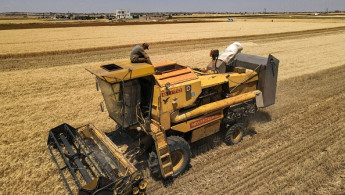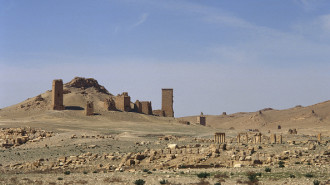Syrian Kurdish authority expects greater wheat yield than last year
Syria's Autonomous Administration (AA), the Kurdish authority which controls the breadbasket in the country's northeast, is expecting an over 1-million ton wheat yield this year, an increase from 2022.
"This season's wheat production is expected to be no less than 1 million tons, between 1 million and 1.2 million tons," Salman Barudo, the AA Minister of Agriculture, told The New Arab.
Barudo said that this year's harvest would satisfy demand within the AA, the population of which consumes 750,000 tons per year.
Wheat is a staple food product within Syria, particularly as poverty and food prices alike have been on the rise since the war in Ukraine began in Spring 2022.
More than 50 per cent of Syria's population is food insecure and the price of food has doubled compared to a year ago, according to the WFP.
In both AA and Syrian regime-controlled areas, this year’s wheat harvest was expected to be a marked increase compared to the previous two years.
According to the UN's Food and Agriculture Organisation (FAO), Syria's wheat production in 2021 was the "lowest in fifty years," primarily due to climate change and the rising cost of inputs.
This year's bumper crop is primarily a result of both "favourable climactic conditions and rainfall," as well as the availability of diesel, Barudo explained.
On Monday, Reuters reported that regime-held areas of Syria are expected to halve their imports of wheat this year due to a similarly bountiful harvest.
Over two-thirds of Syria's wheat crop is planted in areas under AA control.
Each year, the regime and AA engage in a bidding war, setting their prices high enough to allure farmers to sell to them.
This year, the gap between the two authorities' offerings is even greater.
The AA is paying more than the regime, buying wheat at US$0.43 per kilo, as compared to US$0.25 cents per kilo from the regime.




 Follow the Middle East's top stories in English at The New Arab on Google News
Follow the Middle East's top stories in English at The New Arab on Google News


